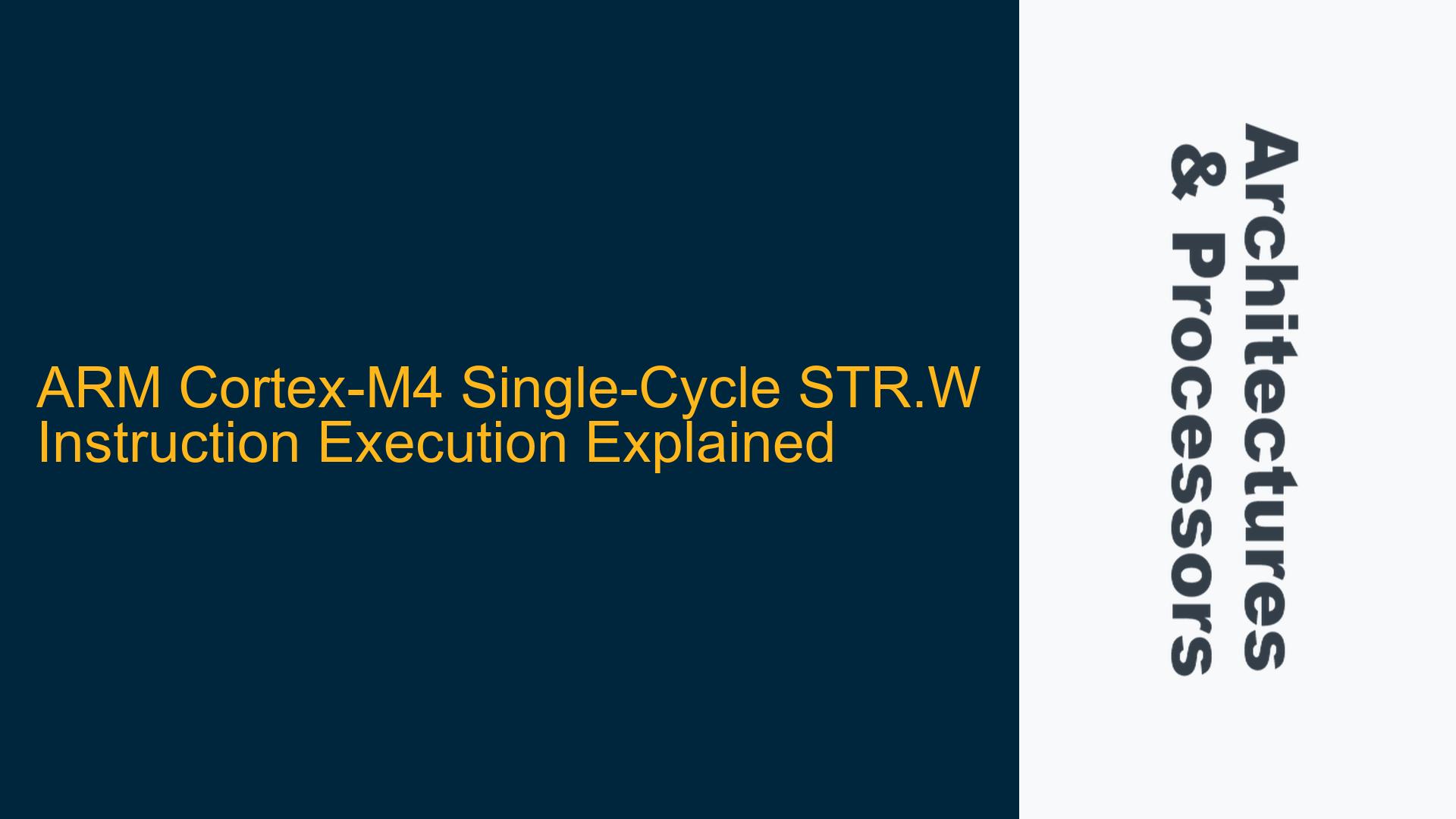ARM Cortex-M4 Store Instruction Pipeline Optimization
The ARM Cortex-M4 processor, like many modern microprocessors, employs a variety of techniques to optimize instruction execution. One such optimization involves the pipelining of memory access instructions, specifically the STR.W (Store Register) instruction. This optimization allows consecutive STR.W instructions to complete in a single cycle under certain conditions. The key to understanding this behavior lies in the processor’s ability to overlap the address and data phases of neighboring load and store instructions.
When a STR.W instruction is executed, it involves two main phases: the address phase, where the target memory address is calculated, and the data phase, where the data is written to the calculated address. In a non-pipelined scenario, each STR.W instruction would require at least two cycles to complete—one for the address phase and one for the data phase. However, the Cortex-M4 can pipeline these phases across consecutive STR.W instructions, allowing the address phase of the second STR.W to overlap with the data phase of the first STR.W. This overlapping results in both instructions completing in a single cycle each.
The conditions under which this pipelining occurs are critical. The instructions must be consecutive and must not be separated by other types of instructions that could disrupt the pipeline. Additionally, the memory system must be able to handle the back-to-back writes without introducing wait states. If these conditions are met, the Cortex-M4 can achieve single-cycle execution for consecutive STR.W instructions, as observed in the cycle counter measurements.
Memory System Behavior and Pipeline Hazards
While the pipelining of STR.W instructions can lead to significant performance improvements, it is not without potential pitfalls. One of the primary concerns is the behavior of the memory system, particularly when dealing with different memory types or when cache coherency mechanisms are involved. The Cortex-M4’s memory system is designed to handle a variety of memory types, including tightly coupled memory (TCM), flash memory, and external RAM. Each of these memory types has different access characteristics, which can affect the ability to pipeline STR.W instructions.
For example, flash memory typically has higher latency compared to TCM. When STR.W instructions target flash memory, the memory system may introduce wait states, disrupting the pipeline and preventing single-cycle execution. Similarly, if the memory system is busy with other operations, such as cache line fills or write-buffer flushes, the pipeline may stall, leading to increased cycle counts for STR.W instructions.
Another potential issue arises from pipeline hazards, which occur when the execution of one instruction depends on the result of a previous instruction that has not yet completed. In the case of STR.W instructions, a hazard could occur if the target address of a store instruction depends on the result of a previous load or arithmetic operation. If the Cortex-M4 detects such a hazard, it may insert a pipeline stall, preventing the single-cycle execution of the STR.W instruction.
To mitigate these issues, it is essential to understand the memory system’s behavior and to design the software accordingly. This includes selecting appropriate memory types for different data structures, minimizing dependencies between instructions, and using memory barriers or cache management instructions when necessary to ensure proper synchronization.
Optimizing Code for Single-Cycle STR.W Execution
Achieving single-cycle execution for STR.W instructions on the ARM Cortex-M4 requires careful optimization of both the code and the memory system. The following steps outline a systematic approach to achieving this optimization:
First, ensure that the STR.W instructions are targeting memory with low access latency, such as TCM. If the target memory is flash or external RAM, consider copying the data to TCM before performing the store operations. This approach can significantly reduce the memory access latency and improve the chances of achieving single-cycle execution.
Second, minimize dependencies between instructions that could lead to pipeline hazards. This can be achieved by reordering instructions to separate dependent operations or by using techniques such as loop unrolling to reduce the number of dependencies. Additionally, consider using the Cortex-M4’s dual-issue capability, which allows certain pairs of instructions to be executed in parallel, further reducing the likelihood of pipeline stalls.
Third, use memory barriers or cache management instructions to ensure proper synchronization between the processor and the memory system. For example, the DSB (Data Synchronization Barrier) instruction can be used to ensure that all memory accesses are completed before proceeding to the next instruction. Similarly, the DMB (Data Memory Barrier) instruction can be used to ensure that memory accesses are performed in the correct order.
Finally, profile the code using tools such as the Cortex-M4’s Data Watchpoint and Trace (DWT) unit to measure the cycle counts for STR.W instructions. This profiling can help identify any remaining bottlenecks or inefficiencies in the code or memory system. Based on the profiling results, further optimizations can be applied, such as adjusting the memory layout or fine-tuning the instruction sequence.
By following these steps, it is possible to achieve single-cycle execution for STR.W instructions on the ARM Cortex-M4, leading to significant performance improvements in embedded applications. However, it is important to remember that the specific optimizations required may vary depending on the application and the target hardware. Therefore, a thorough understanding of both the Cortex-M4 architecture and the memory system is essential for achieving the best possible performance.






